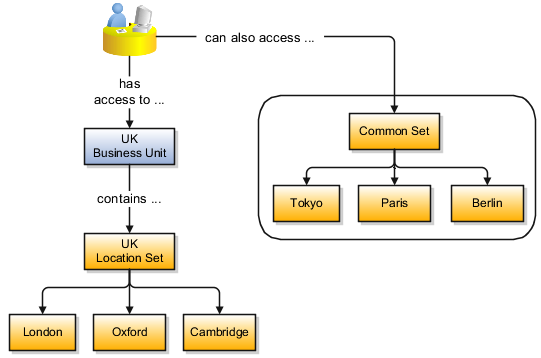
In 11i/R12 there are many configuration data which ‘er shared across all the OUs. Ex: Payment term. It’s good because you are required to define the data only once but the biggest disadvantage is that there is no method to restrict the access. In fusion application a new concept of data sharing is added, where you define reference data set(s) and determine how the data is shared or partitioned.
Reference data sharing facilitates sharing of configuration data such as jobs and payment terms, across organizational divisions (another new organization concept in FA) or business units. Depending on the requirement (specific or common), each business unit can maintain its data at a central location, using a set of values either specific to it or shared by other business units.
This new feature reduces duplication as well as provides the facility to restrict data as required.
From Oracle Guide
Reference data sets are logical groups of reference data that can be accessed by various transactional entities depending on the business context. Oracle Fusion Applications contains a common reference data set as well as an enterprise set that may be used as a default set. Depending on your business requirement you can create and maintain additional reference data sets, while continuing to use the common reference data set.
Ex: The senior management can decide to use a single AP payment method data set throughout the enterprise & let business unit’s managers define their own payment formats.
Partitioning
The partitioning of reference data and creation of data sets enable you to create reference entities across tables or lookup types, and share modular information and data processing options among business units. With the help of partitioning, you can choose to create separate sets and subsets for each business unit depending upon its business requirement, or create common sets or subsets to enable sharing reference data between several business units, without the need for duplicating the reference data. Partitioning provides you the flexibility to handle the reference data in a way appropriate to your business needs.
The figure illustrates the reference data sharing method (assignment to one set only, with common values) where the user can access the data assigned to a specific set in a particular business unit, as well as access the data assigned to the common set.


Recent Comments